Ivory Coast
Ivory Coast, in the long form of the Republic of Côte d’Ivoire (RCI), is a country located in Africa, on the Atlantic Ocean, in the western part of the Gulf of Guinea. Covering an area of 322,462 km2, it is bordered to the north-northwest by Mali, to the northeast by Burkina Faso, to the east by Ghana, to the southwest by Liberia, to the west-northwest by Guinea and south by the Atlantic Ocean. The population is estimated at 26,594,750 inhabitants in 2017. Côte d’Ivoire is the political and administrative capital of Yamoussoukro, although almost all of the institutions are located in Abidjan, its main economic center. Although French is the official language, more than 60 other dialects are spoken daily. Its currency is the CFA franc. The country is part of ECOWAS, the African Union and the Organization of Islamic Cooperation.
First a French protectorate in 1843 and became a French colony on March 10, 1893, the country gained independence on August 7, 1960, under the leadership of Félix Houphouët-Boigny, first president of the Republic. The economy, mainly focused on the production of coffee and cocoa, experienced an exceptional boom during the first two decades, making Côte d’Ivoire a flagship country in West Africa. In 1990, the country went through, in addition to the economic crisis which occurred at the end of the 1970s and which persisted, periods of turbulence on the social and political levels. These problems were exacerbated at the death of Félix Houphouët-Boigny in 1993.
The adoption of a new constitution and the organization of the presidential election which, in 2000, brought Laurent Gbagbo to power, did not ease social and political tensions, which led to the outbreak of a politico-military crisis on September 19, 2002. After several peace agreements, the 2010 presidential election saw the victory of Alassane Ouattara against his opponent Laurent Gbagbo. Re-elected in 2015, Alassane Ouattara revived economic growth through a liberal and interventionist policy while being criticized for his management of the army and justice. In 2016, a new constitution was adopted, initiating the Third Republic. Ivory Coast is developing and ranks 182nd according to its Human Development Index (HDI) in 2017.
Ivory Coast’s history
Ivory Coast’s politics
As soon as it gained independence, Ivory Coast, a unitary state, opted for a presidential regime. Renewed by the second republic, the presidential system is characterized by the separation of powers within the state: the executive, the legislative and the judiciary. The Ivorian institutional landscape is made up of the bodies exercising these three powers and other institutions such as the Economic and Social Council and the Mediator of the Republic. At independence, Félix Houphouët-Boigny had carefully managed to avoid any ethnic conflict within the framework of a single party regime. This balance was also based on an ecological and social division of labor with, in the north, the Dioula who dominate transport and trade while the southerners find themselves in the administration and management of power. Northerners who had acquired a sufficient professional qualification are sent to embassies or international institutions to represent the country; some have access to ministries, but politically marginal. However, the transition to a multiparty system in 1990 also allowed the assertion of identity of ethnic communities in political space and the opening of debates on national construction. The tensions between the people of the north and the south, hitherto confined to the economic field, are transferred to the political field.
Ivory Coast’s economy
The growth rate of its gross domestic production is 10.2% between 1960 and 1965 and 7.2% between 1965 and 1975. Between 1970 and 1975, while those of sub-Saharan Africa and the rich Western countries are respectively 4% and 6% on average, the GDP growth rate in Ivory Coast is 6.8% per year. This particular performance is partly explained by the political stability that characterizes it, unlike many African states. The economy does, however, show symptoms of structural weakness: it is in fact characterized by strong external dependence and exhibits productivity inequalities in its various sectors. The fall in the prices of the basic agricultural products made up of coffee and cocoa, the main export products that dominate the country’s economy, led to an economic recession in the late 1970s. The economic crisis continued for years 1990, producing harmful social consequences. In January 1994, the 50% devaluation of the CFA franc brought a positive growth rate of 6% for two consecutive years, thanks in particular to the support measures adopted by the international financial community. The structural adjustment programs put in place by the external partners, the International Monetary Fund and the World Bank, led to the adoption of drastic measures of budgetary restriction and economic recovery by the government, without much success. The arrears in the payment of debts contracted with these institutions, as well as the governance problems linked to the execution of projects financed by the European Union, led, at the end of the 1990s, to a breakdown of the partnership with these institutions.
The negative impact of this governance situation on the economy was aggravated by the military coup in December 1999 and the political instability that resulted. The growth rate for 2000 is negative: -2.3%. The country will experience a decade of civil war, then armed and bloody clashes after the presidential election of 2010. Since 2004, Côte d’Ivoire has recorded positive real growth rates (+1.6% in 2004, +1 , 8% in 2005 and 1.2% in 2006) which however remain below the population growth rate, estimated at 3.3%. The inflation rate ranges from 1.4% to 4.4%. Settled debt service, which represented 10.68% of exports in 2000, was reduced to 5% of exports in 2003, 3.3% in 2004 and 1.45% in 2005, thus reflecting the State’s difficulties in keep its external commitments. These difficulties persist despite the increase in the level of exports, which rose to 37.9% in 2000 and to 47.8% of GDP in 2005.
New President Alassane Ouattara is a recognized international economist. The country, encouraged by a new political stability, can hope to regain first of all the confidence in itself to carry out the many necessary reforms then the confidence of the big international organizations and the other countries. Among the most urgent points, the competitiveness of its main activities, the creation of an administrative and banking environment conducive to business, the rehabilitation and modernization of infrastructure (telephone network, roads and port, energy). With the revival of activities, the forecast for GDP growth fell from 4.5% to 8.6% in 2012, after a decrease of 4.7% in 2011. Food crops, livestock, extraction mining, petroleum development and export competitiveness are improving, but the performance of the productive sector is hampered by the increase in domestic debt. However in June 2012, the IMF, the World Bank and the Paris Club approved a reduction in external debt of 64.2% or $ 8.18 billion.
Ivory Coast’s demography
The Ivorian population, as in almost all African countries, is growing rapidly. During the last censuses carried out in 1975, 1988 and 1998, it amounted to 6,709,600, 10,815,694 then 15,366,672 inhabitants. It was estimated at 24,294,750 inhabitants in 2017. This population consists of 51.6% men and 48.4% women. The natural growth rate was 2.6% in 2014 according to the National Statistics Institute (INS). This rapid increase is partly due to the continued immigration of foreign populations. In fact, during the first thirty years of its existence, Ivory Coast had produced a veritable melting pot by welcoming around 26% of foreigners from neighboring countries. The general census carried out in 1998 thus reveals a rate of foreigners of 26%, that is to say more than a quarter of the total population. These immigrants, in search of well-being, are attracted by the rapid economic development and the social and political stability that the country experienced before the start of the socio-political and military crises. They mainly come from neighboring countries which are members of the Economic Community of West African States (ECOWAS). Despite the politico-military crisis of 2002, the country still had many foreigners from ECOWAS in 2008, including Burkinabés, by far the most numerous (around two million), Malians, Guineans, Senegalese, Liberians, Ghanaians. To these are added the Lebanese-Syrians, essentially traders, sometimes industrialists, Asians and Europeans. The percentage of naturalized foreigners is 0.6%.
The Ivorian population is also multi-ethnic. Five large ethnic groups, comprising around sixty ethnicities, constitute the nationals of origin: in the north, the Voltaic group (gur) or Sénoufos (13% of the population); in the north-west, the Mande group from the North or Malinké (17.2% of the population); in the west, the Mande group from the South (8.4% of the population); in the south-west and center-west, the krous group (9.4% of the population); in the center and east, the Akans group (41.1% of the population), which includes the Baoulés (25% of the population).
Made up of a high proportion of young people (in 1998 young people under the age of 15 represented 43% of the total population, compared with 4% for the elderly), the Ivorian population is unevenly distributed over the national territory. Variations are observed from one region to another, but also between rural and urban areas. To the detriment of the northern zone, the south, the west and the east are in fact, in addition to foreigners, heavily populated by non-natives whose displacement is dictated by the search for arable land or suitable for the development of crops. rent like coffee and cocoa. The settlement rate is also high in urbanized areas, given the exodus of rural populations made up mainly of young people looking for work. The crisis that started in September 2002 has accelerated the divide between the north and south zones. Across the territory in 1998, the average density was 48 inhabitants per capita. km2. In the southern zone, forest zone, it varies from 53.3 (Bas-Sassandra region) to 272.7 inhabitants (Lagunes region) per capita. km2. 57% of the population lives in rural areas, urban areas shelter 43%. The urban population growth rate is estimated at 4.2% between 1988 and 199837. In 2010, the annual population growth rate was 2.6% according to the National Institute of Statistics. Semi-urban localities of at least 3,000 inhabitants, agglomerated, endowed with a political and administrative function and within which the non-agricultural active population is greater than or equal to 50% are considered as cities. On this basis, 129 cities are counted by the last general population census (1998). Abidjan remains the country’s main urban and economic center, with 2,877,948 inhabitants in 1998. Yamoussoukro (207,000 inhabitants), Bouaké (542,000 inhabitants), Daloa (261,789 inhabitants), Korhogo (225,547 inhabitants), Gagnoa (153 935 inhabitants), Man (172,867 inhabitants) and San-Pédro (164,944 inhabitants), are also large cities. In addition, the country was home to around 26,400 refugees and asylum seekers in 2007, including 24,200 from Liberia who fled the civil war that raged there between 1989 and 2004. In 18 years, there has been a very strong refugee growth because in 2010 the number of refugees is estimated to be 17,458.
Ivory Coast’s education
Ivory Coast’s languages
French is the official language of Ivory Coast and about 70% of the country’s inhabitants understand and speak it. According to the OIF in 2009, 99% of the inhabitants of the largest city in the country Abidjan can read, write and speak French. Today, more than a third of the country’s population has French as their mother tongue, especially among the younger generations. In addition to the French spoken by the majority of Ivorians, 60 other languages are spoken on a daily basis, mainly in rural areas. Among these languages, the most spoken are: Senufo (276,000 speakers) and Dioula (1,500,000 speakers) in the north, Baoulé (300,000 speakers) and Bete (250,000 speakers) are the most spoken languages. in the south. Other languages such as Yacouba (118,300 speakers) and Agi (400,000 speakers) are also important languages, as well as Guru, which is spoken in the west center of the country. These six ethnic groups alone represent 58.03% of Ivorians. Dioula, mainly spoken in the North, is the most widely spoken language in the country due to its frequent use in the trade environment, an activity exercised by the Dioula. It is also a primary language in several countries bordering Ivory Coast.
-
Ivory Coast
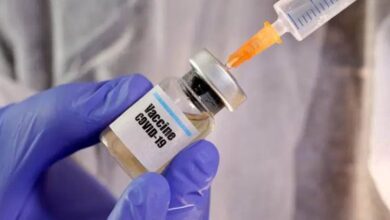
Ivory Coast Receives First Batch Of COVID-19 Vaccine Doses Via COVAX Initiative
Ivory Coast received its first batch of Oxford-AstraZeneca COVID-19 vaccine on Friday. Some 500,000 doses of the vaccine made by…
Read More » -
Ivory Coast
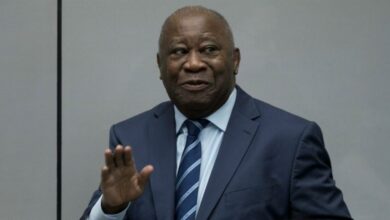
Ivory Coast: Former President Laurent Gbagbo’s Party Ends Boycott Of Elections
Former Ivory Coast President Laurent Gbagbo’s political party, The Ivorian Popular Front (FPI), on Wednesday announced it will take part…
Read More » -
Ivory Coast
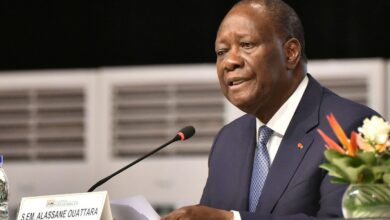
Ivory Coast: President Alassane Ouattara Rules Out Formation Of A Transitional Council
Ivory Coast President Alassane Ouattara on Tuesday ruled out the possibility of a power transition in the country following last…
Read More » -
Ivory Coast
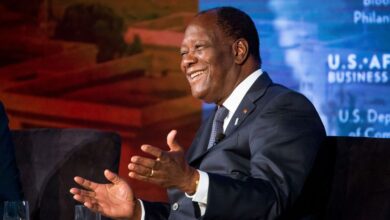
Ivory Coast President Ouattara, Rival Leader Bedie Assures To Continue With Talks
Ivory Coast President Alassane Ouattara and opposition leader Henri Konan Bedie has assured to continue with talks aimed at restoring…
Read More » -
Ivory Coast

Ivory Coast: President Alassane Ouattara Invites Opposition Leader For Talks
Ivory Coast President Alassane Ouattara on Monday invited the former president and opposition leader, Henri Konan Bedie, for a meeting…
Read More » -
Ivory Coast
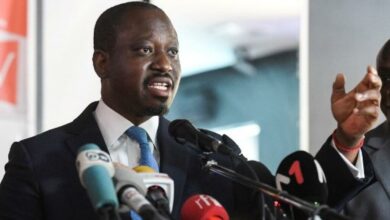
Ivory Coast: Rebel Leader Guillaume Soro Calls Military To Join Opposition
Ivory Coast’s former prime minister and rebel chief Guillaume Soro on Wednesday called on the country’s army to join the…
Read More » -
Ivory Coast
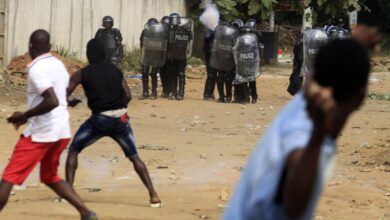
Ivory Coast: International Observers Urge Peace, Stability After Controversial Election
The controversy going on around Ivory Coast’s presidential election results has attracted the attention of international observers including the United…
Read More » -
Ivory Coast

Ivory Coast: President Ouattara Declared Election Winner, Wins 94.27% Of Vote
Ivory Coast’s Independent Electoral Commission on Monday announced President Alassane Ouattara has been re-elected for a controversial third term with…
Read More » -
Ivory Coast
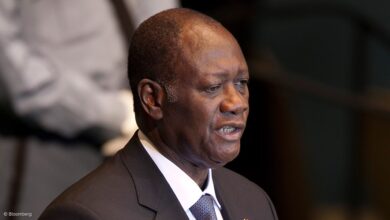
Ivory Coast: Opposition Leaders Call For Civil Transition As Ouattara Heads To Win
Opposition leaders in Ivory Coast on Sunday called for a “civilian transition” from President Alassane Ouattara’s government after initial results…
Read More » -
Ivory Coast
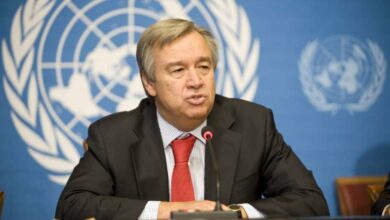
Ivory Coast: UN Secretary-General Calls On Political Parties To Reject Violence
The United Nations Secretary-General Antonio Guterres has called on all Ivory Coast’s political parties to refrain from resorting to violence…
Read More » -
Ivory Coast
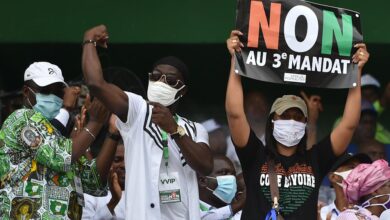
Ivory Coast: Opposition Leaders Protest President Ouattara’s Bid For Third Term
Ivory Coast’s main opposition leaders and thousands of their supporters gathered came out on the streets in Abidjan to reject…
Read More » -
Ivory Coast

Ivory Coast: African Court Requests Former President Gbagbo’s Voting Rights Be Restored
Ivory Coast’s former president Laurent Gbagbo, who has been barred from running in the October presidential election, should be allowed…
Read More » -
Ivory Coast

Ivory Coast: Opposition Calls For Civil Disobedience Protests Against Ouattara
Ivory Coast’s top opposition leader Henri Konan Bedie on Sunday called for nationwide civil disobedience to protest against President Alassane…
Read More » -
Ivory Coast

Ivory Coast: Ex-Rebel Leader Guillaume Soro Says His Candidacy For President Is Irrevocable
Ivory Coast ex-rebel leader and former Prime Minister Guillaume Soro on Thursday said his candidacy for the upcoming election was…
Read More » -
Ivory Coast
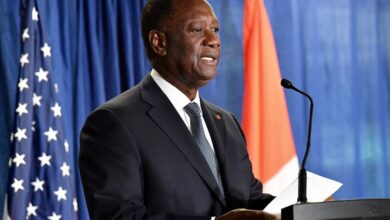
Ivory Coast: Government Rejects Africa Court’s Order Allowing PM Soro To Run In Election
Ivory Coast government on Wednesday said it will not recognize the African Court on Human and Peoples’ Rights Tuesday ruling…
Read More » -
Ivory Coast

Ivory Coast: Protests turn Violent As Top Court Clears Ouattara’s Third Term Bid
Protests turned violent in several cities of Ivory Coast on Monday after the country’s top court cleared the path for…
Read More » -
Ivory Coast

Ivory Coast: President Alassane Ouattara Applies For October Election Amid Protests
Ivory Coast President Alassane Ouattara submitted his candidacy for the October election on Monday. Ouattara is running for a third…
Read More » -
Ivory Coast

Ivory Coast: Opposition Protests Against President Ouattara’s Third Term Bid
Ivory Coast Opposition and civil society group members came out on the streets in Abidjan on Thursday to protests against…
Read More » -
Ivory Coast

Ivory Coast: President Alassane Ouattara Confirms Seeking Re-Election In October
Ivory Coast’s President Alassane Ouattara on Thursday confirmed he would seek re-election in October, formally accepting the ruling party’s nomination…
Read More » -
Ivory Coast

Ivory Coast: President Ouattara Names Hamed Bakayoko As New Prime Minister
Ivory Coast President Alassane Ouattara on Thursday named Defence Minister Hamed Bakayoko as the new prime minister after his predecessor…
Read More » -
Ivory Coast

Ivory Coast: Electoral Body Assures Of Conducting Fair October Elections
Ivory Coast’s electoral commission on Wednesday assured conducting a fair election in the country as the ruling RHDP party has…
Read More » -
Ivory Coast

Ivory Coast: Ruling Party Requests President Alassane Ouattara To Seek Another Term
Ivory Coast’s ruling party on Monday said it had requested President Alassane Ouattara to stand in the upcoming presidential election…
Read More » -
Ivory Coast

Ivory Coast’s Ruling Party Likely To Ask President Ouattara To Contest Election Again
Ivory Coast’s ruling party is likely to urge President Alassane Ouattara to seek a third term in October’s presidential election,…
Read More » -
Ivory Coast

Ivory Coast: PM & Presidential Election Candidate Amadou Gon Coulibaly Dies
Ivory Coast’s Prime Minister Amadou Gon Coulibaly, who is also the governing party’s candidate for an October presidential election, breathed…
Read More » -
Ivory Coast

Ivory Coast: Prime Minister Coulibaly Heads To France For Medical Checks
Ivory Coast’s Prime Minister Amadou Gon Coulibaly is currently in France for medical checks, reported Reuters. He took a flight…
Read More »

